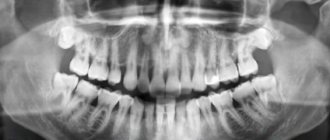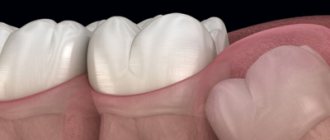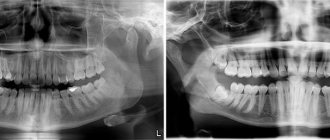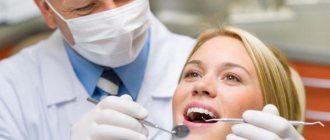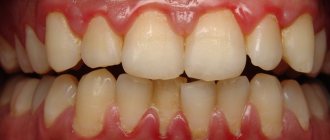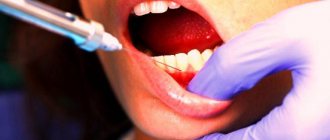Often the cause of female infertility lies in pathologies of the fallopian tubes, and all women who plan to become mothers need to have them checked. The most common, informative and accessible way to diagnose the condition of the fallopian tubes today is hysterosalpingography
– one of the x-ray methods for examining female reproductive health.
During the procedure, the area being examined is exposed to x-rays, thanks to which the diagnostician (in this case, a radiologist) receives information about the condition of the fallopian tubes and can assess their patency.
The fact is that this factor directly affects a woman’s ability to bear children. And the number of patients diagnosed with infertility, unfortunately, has tended to increase over the past decades.
Thus, the hysterosalpingography procedure makes it possible to obtain very clear images in which adhesions and other pathologies are visible. An X-ray examination of the fallopian tubes can also help identify conditions such as fibroids, polyps or synechiae in the uterine cavity, hydroomentum, and peritubar adhesions (that is, adhesions pressing on the outside of the fallopian tube). The results of this examination are accurate in approximately 80% of cases. In controversial situations, the doctor may prescribe an additional examination - for example, hysteroscopy
.
X-ray of the fallopian tubes is safe - the average dose of radiation that a woman usually receives during an examination is 70-100 times less than the maximum safe one and cannot lead to tissue damage or mutations.
When is the procedure scheduled?
An X-ray of the fallopian tubes is performed in cases where the planned pregnancy does not occur for a long time, but other diagnostic procedures have not identified objective factors in the occurrence of the pathology.
Other indications for the procedure:
- presence of previously diagnosed uterine pathologies;
- malformations of the uterus and fallopian tubes;
- suspicion of cancer;
- the likelihood of tuberculosis of the genital organs;
- a history of pregnancies that ended in miscarriage or fetal death.
This method is also used before ovulation stimulation (for example, with polycystic ovary syndrome) or IVF.
Hysterosalpingography
– the procedure is quite common, it is performed by 1-2% of women planning a pregnancy. Although in recent years, doctors have been talking about a trend towards an increase in this number. This may be due to the fact that these days more and more women are deciding to have their first child at the age of 30-35.
Contraindications
X-raying of the fallopian tubes has some contraindications, which include:
- pregnancy,
- allergy to contrast agent,
- various infections of the vagina or cervix;
- acute inflammatory processes in the genital organs, inflammation of the vagina and vulva
- with hypothyroidism;
- in the presence of diagnosed renal or liver failure, liver cirrhosis;
- with uterine bleeding;
- in the general serious condition of the patient;
- with thrombophlebitis and acute heart failure.
Therefore, before the examination, doctors advise taking a pregnancy test, a general gynecological examination and taking a bacteriological smear from the vagina.
How dangerous is x-ray?
In many cases, dental treatment is simply unthinkable without X-ray examination. When you can't do without it:
- when filling thin and curved tooth canals;
- to detect hidden carious cavities, caries under fillings;
- when the question arises whether wisdom teeth need to be removed (for example, if they are incorrectly positioned);
- to diagnose a tooth root fracture, cyst, determine the degree of inflammation of the tissues around the diseased tooth;
- when the issue of removing or restoring a tooth is being decided.
Is there a relationship between a man’s reproductive function and his potency?
More likely no than yes. A man may complain of poor erection, but he may have a normal spermogram. There are also cases when patients are completely satisfied with their intimate life, but suffer from severe infertility.
However, sometimes decreased potency and reproductive dysfunction are related. There are diseases that lead to disorders of potency and spermatogenesis. Another possibility is reduced fertility caused by weak ejaculation or sperm backing up into the bladder.
Cost of services
Registration online
1200
Primary appointment (examination, consultation) with a pediatric dentist
1200
Registration online
Service code B01.064.003
Registration online
for free
Repeated appointment (examination, consultation) with a pediatric dentist
for free
Registration online
Service code B01.064.004
see all prices
In the first three months, it is not advisable to take dental x-rays for pregnant women, since the fetus has not yet formed. Radiation can have an adverse effect on dividing cells, cause chromosome abnormalities and provoke intrauterine developmental defects. By the second trimester, at 16–20 weeks, the fetus is already fully formed - a tiny dose of radiation will not harm the baby in any way, so pictures can be taken without fear.
Dental X-rays during pregnancy are much safer than examinations of the pelvis or chest, because the mother’s belly is reliably protected by a lead apron, and dental examinations are always carried out using special devices with reduced radiation exposure. This applies to both old models and modern visiographs.
What are the alternatives to CT?
The most common ways to assess health during pregnancy are ultrasound and MRI. In rare cases, conventional radiography can be used, but it is undesirable, just as computed tomography is contraindicated during pregnancy.
X-ray
This study is also unsolicited. Naturally, the radiation dose will be much less than a CT scan during pregnancy. But such a study will be prescribed only as a last resort, if there is no way to do without it.
MRI
The procedure is absolutely safe for the pregnant woman and the fetus, it has no consequences and will not affect the development of the child. However, the MRI procedure is no longer aimed at examining soft tissues, so it will not be possible to examine bone structures in detail. That is why in some cases you will have to think about whether a pregnant woman can have a CT scan.
Visiograph - an alternative to x-ray
A visiograph is a modern analogue of an x-ray machine. Its advantages:
- Allows you to take an image instantly, high-quality data is immediately displayed on your computer monitor.
- A narrow beam of rays is directed exclusively at the diseased tooth, does not affect adjacent tissues, and certainly cannot “touch” the abdomen.
- The duration of exposure (irradiation) is 10 times lower than when using old-style X-ray machines and is only 0.05–0.3 seconds. Radiation exposure is only 2 microsieverts (when using old devices - from 7 to 80 microsieverts).
For comparison, just sitting in front of the TV for three hours and enjoying your favorite series, a mother receives a radiation dose of 5 microsieverts. The safe radiation dose per year is 1,000 microsieverts (that’s 500 shots). Of course, you shouldn’t take the procedure lightly, but you shouldn’t panic and overestimate the danger to the baby either.
How much does the frequency of sexual contact affect the possibility of conception?
The frequency of sex is very important for conception. A healthy married couple who has sex 4-5 times a week has the best chance of conceiving. At the same time, repeated sex over several days, unfortunately, will not contribute to the growth of male fertility. In this case, the sperm concentration drops, and the likelihood of getting pregnant decreases. However, if a married couple is healthy, then they can choose any intimate schedule convenient for themselves. A healthy man's body produces enough healthy cells every day to conceive a child.
How to minimize risks
What should an expectant mother do so as not to worry about the baby’s health?
- Not all clinics, especially municipal ones, have visiographs. It is better to inquire about this in advance.
- Be sure to use a protective apron and collar.
- You need to inform your doctor about the exact timing of your pregnancy. In case of a delay, even if the test shows a negative result, you must inform the specialist. In unclear situations, diagnosis (and treatment) are carried out as if pregnancy was definitely established.
- Severe pain, swelling, inflammation are good reasons not to delay a visit to the dentist, even in the first trimester. Unless absolutely necessary, the doctor will never prescribe dental x-rays during pregnancy and will try to do everything to postpone treatment to the 2nd, safe trimester or to the postpartum period. However, some acute conditions may require emergency intervention, such as purulent pulpitis or acute periodontitis. In this case, the mother needs to remember that a rapidly developing infection in the oral cavity will cause much more serious damage to the baby than 1-2 pictures on a visiograph.
- If there are concerns that the X-ray has somehow damaged the baby, you should consult with a geneticist and do an ultrasound. This will reassure those mothers who may have taken the photo without knowing that they were expecting a baby.
Since dental treatment during pregnancy is still associated with certain difficulties, the best thing an expectant mother can do is to go to the dentist and have all her teeth treated at least a month before the date of planned conception. And already in pregnancy, mommy should brush her teeth thoroughly and eat foods high in calcium.
Diagnostic results: interpretation of images
The contrast agent does not transmit x-rays, and the cavities filled with it are visible on the image as bright white spots. An indicator of good tube patency is the spreading of the contrast agent along the peritoneum to areas remote from the insertion site. If the contrast stops at any section of the fallopian tube, it means that there is an adhesion or other pathology in this place. Depending on the shape of the uterus and tubes, the doctor can determine which pathological process is preventing conception. Interpreting images of the uterus and fallopian tubes requires extensive knowledge and considerable practical experience. Self-diagnosis is a completely useless exercise.
If the results of the examination give reason to suspect the presence of uterine cancer, it is necessary to order additional examinations, including taking tissue for a biopsy. The diagnostic doctor's conclusion, along with the photographs, is transmitted to the attending physician who referred the woman for examination.
Interpreting images of the uterus and fallopian tubes requires extensive knowledge and considerable practical experience. Self-diagnosis is a completely useless exercise.
What do doctors think?
Doctors do not have a consensus on the effect of X-ray radiation on the unborn child at the planning stage. Some claim that it is absolutely safe and will not cause any harm.
Others say that there is still a certain percentage of negative impact, but it depends on the frequency of exposure over any period of time.
What should you do if, at the stage of pregnancy planning, you have to visit an x-ray room? How long before you can think about conceiving? It is clear that you still need to undergo an examination, and there is no escape from it. Therefore, it is best to count the days of the menstrual cycle. It is not recommended to take x-rays in the second and last third. However, this applies to x-rays of the pelvis or lower spine. If you are a very suspicious person who avoids pills, microwaves and computers, then you can postpone conception until the next menstrual cycle, so as not to worry then for the entire nine months.
Features of x-rays before pregnancy
A situation may arise when a woman, having undergone an X-ray examination, subsequently finds out that she was already pregnant at that time. Awareness of what happened, and fear of “what will happen?” give no rest. In this case, you need to know exactly the timing of the procedure and the date (at least approximately) of conception.
The fact is that if radiography was carried out in the first third of the menstrual cycle (days 1-8), when the egg has not yet matured or been released, then there is nothing to worry about. If the egg was irradiated after ovulation, that is, when it had already left the ovary (in the second third of the menstrual cycle) and conception had occurred, then the question of continuing the pregnancy should be entrusted to a doctor.
Everything will depend on how strong the radiation was, how often it had to be done, and what it was intended for. So, if, when planning a child, the expectant mother takes an X-ray of a tooth, then that’s one thing (there is no need to talk about any irradiation of the egg here). But if an X-ray examination of the pelvis was carried out, and more than once, then, of course, this can negatively affect both the pregnancy that has already occurred and the planned one. In the second case, it will be better if conception occurs a month after the procedure.
What is the relationship between a man's reproductive function and his age?
With age, hormonal changes occur in a man's body, the secretion of the gonads decreases, spermatogenesis decreases, and the consequences of environmental exposure accumulate. All this does not have the best effect on the ability to conceive. However, if a man leads a healthy lifestyle and monitors his physical condition, then his reproductive functions can be maintained until old age.
But in fairness, it is worth noting that in the sperm of older men, a larger number of cells with a broken DNA strand are found than in the sperm of younger men. Fertilization with such sperm leads to genetic abnormalities of the fetus and miscarriages (even if the woman is much younger than her partner). However, the sperm of an older man also contains sperm that can fertilize an egg.
Can you trust the equipment?
Today, modern digital equipment is used to conduct radiographic examinations. This, of course, does not eliminate X-rays, but many doctors believe that minimal radiation received after the procedure will not cause any harm when planning a pregnancy. In addition, X-ray itself is a fairly informative diagnostic method that allows you to identify many pathologies, so it should not be ignored.
However, many, especially people of the older generation, are sure that after an x-ray, the unborn child may develop various pathologies and developmental anomalies. However, if there is no child yet, where will they come from? If you are very worried about the upcoming fluorography or dental x-ray examination, then you can ask the doctor for a protective apron. By the way, they give it anyway, especially when conducting examinations using old-style equipment.
Individual X-ray protection equipment is used during the study.
The need for x-rays before pregnancy
An X-ray examination performed during pregnancy planning may be needed in different cases. For example, in the absence of fluorography. It may be required at work if this period coincides with the next preventive medical examination. Or the expectant mother simply has not undergone such an examination for a long time, and now, in preparation for conception, she will have to do it.
Another option for x-ray examination is dental treatment. Before pregnancy, it is advisable to carry out a complete sanitation of the oral cavity to exclude foci of infection. Often during dental treatment, especially in cases of dental problems, it is necessary to take an x-ray.
Before planning a pregnancy, it is necessary to sanitize your teeth
There are situations when, in order to undergo a full examination before conception, the doctor, in addition to directions for tests, prescribes an X-ray examination of the abdominal organs. This procedure is especially necessary when you need to check the patency of the fallopian tubes.
